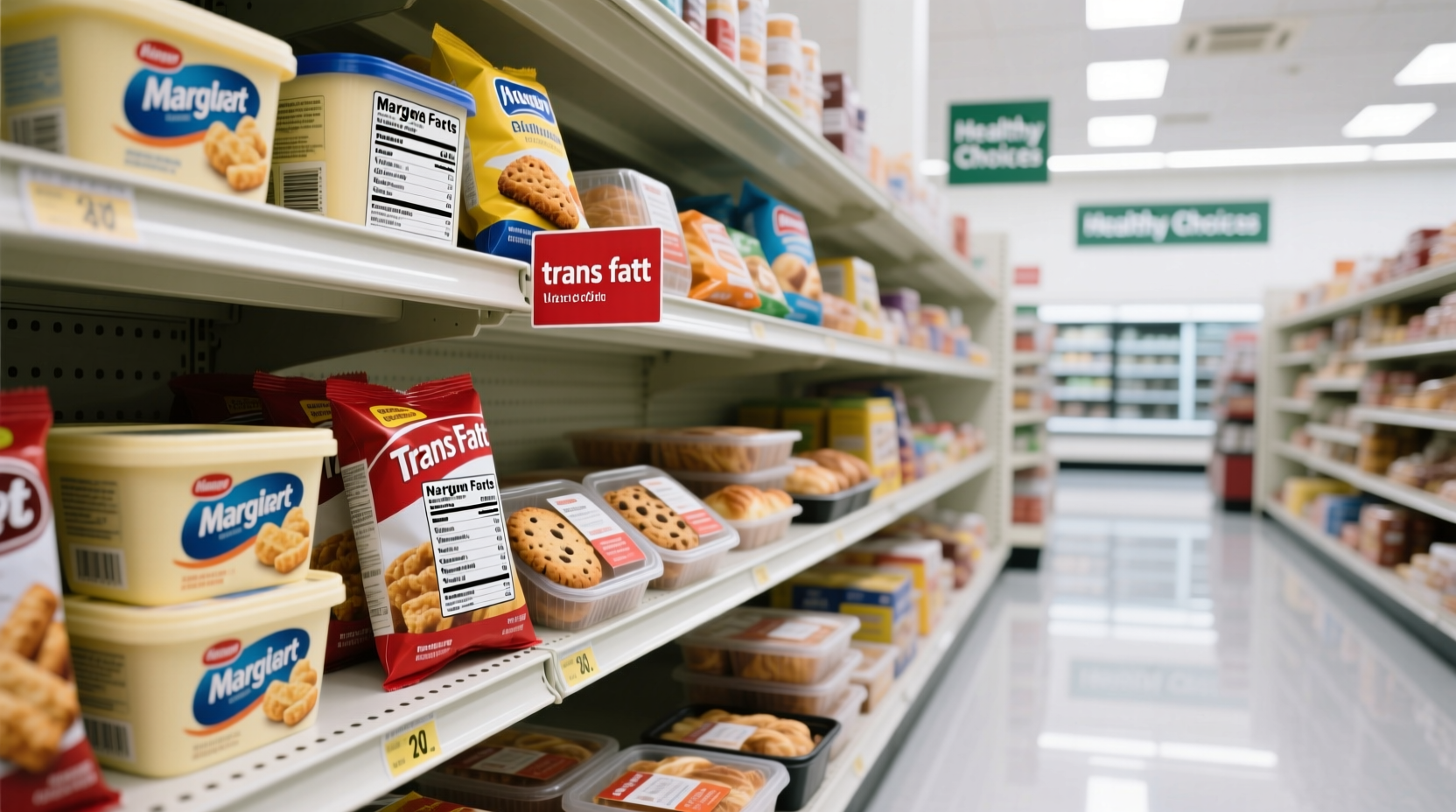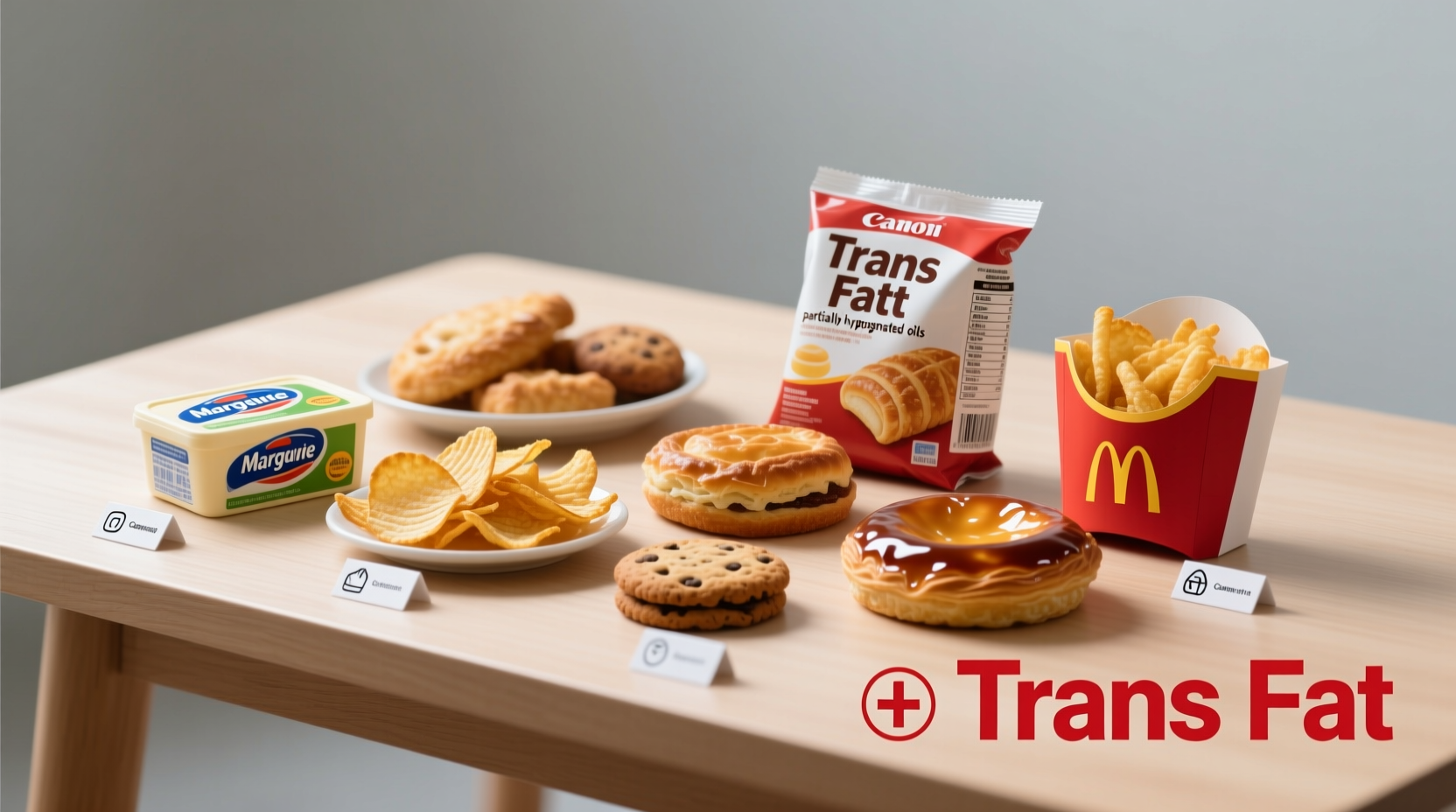Discover exactly which foods contain trans fats in 2024, how to spot them on labels, and practical strategies to avoid these harmful fats while making smarter grocery choices. This guide delivers current, science-backed information you can trust—no confusing jargon, just clear facts to protect your heart health.
Understanding Trans Fats: The Critical Distinction
Not all trans fats are created equal. Understanding the difference between artificial and natural trans fats is essential for making informed dietary decisions:
| Type | Source | Health Impact | Current Prevalence |
|---|---|---|---|
| Artificial Trans Fats | Partially hydrogenated oils (PHOs) | Significantly increases heart disease risk | Mostly eliminated since 2018 FDA ban |
| Natural Trans Fats | Beef, lamb, dairy products | Minimal impact at normal consumption levels | Still present in animal-based foods |
This critical distinction matters because while artificial trans fats have been largely removed from the food supply due to their proven health risks, natural trans fats occur in small amounts in certain animal products without the same level of concern from health authorities.
The Evolution of Trans Fat Regulations: A Timeline
Understanding how trans fat regulations have evolved helps explain why certain products may still contain trace amounts:
- 2006: FDA requires trans fat labeling on nutrition facts panels
- 2013: FDA determines PHOs are not "generally recognized as safe"
- 2015: FDA sets three-year compliance period for complete removal
- 2018: Deadline for complete removal of artificial trans fats
- 2023: FDA extends compliance for certain products with specific usage permissions
Despite these regulations, the FDA allows products with less than 0.5 grams of trans fat per serving to be labeled as "0g trans fat." This labeling loophole means multiple servings of such products can accumulate significant trans fat intake.
Top 7 Food Categories Still Containing Trans Fats
1. Commercially Baked Goods
Many mass-produced baked items still contain trace trans fats from PHOs used for texture and shelf life. Look for these culprits:
- Ready-made pie crusts (both refrigerated and frozen)
- Cake mixes and frosting products
- Store-bought cookies and crackers
- Some breakfast pastries and cinnamon rolls
2. Fried Restaurant Foods
While major chains have eliminated trans fats, smaller establishments and certain ethnic cuisines may still use partially hydrogenated oils:
- Fried chicken at regional fast-food outlets
- Donuts from independent bakeries
- Fried appetizers at some restaurants
3. Non-Dairy Creamers
Both liquid and powder non-dairy creamers frequently contain palm oil and partially hydrogenated oils. A CDC analysis found that 30% of non-dairy creamer products still contain detectable trans fats despite "0g" labeling.

4. Microwave Popcorn
Flavored microwave popcorn remains a surprising source of trans fats. The oil used for flavoring often contains PHOs to help coatings adhere to kernels. Always check ingredients for "partially hydrogenated oils" beyond just the nutrition label.
5. Refrigerated Dough Products
Canned biscuits, cinnamon rolls, and pizza dough frequently use PHOs to maintain texture during storage. These products often contain multiple servings per container, potentially delivering more than 0.5g of trans fats despite "0g" labeling.
6. Margarine and Vegetable Shortening
While many brands have reformulated, some stick margarines and shortenings still contain trans fats. Tub margarines are generally safer, but always verify ingredients.
7. Frozen Pizza and Prepared Meals
Cheese toppings, crusts, and sauce thickeners in frozen meals may contain PHOs. These products often combine multiple trans fat sources in a single meal.
How to Spot Hidden Trans Fats: Label Reading Strategies
Nutrition labels alone won't tell the whole story. Follow these practical steps to identify trans fats:
- Check the ingredients list for "partially hydrogenated oils"—this is the definitive indicator
- Calculate potential hidden trans fats: If a product has 3g of trans fat per serving but lists "0g" on the label, it likely contains 0.4g per serving (just under the threshold)
- Multiply by servings per container: A product with 0.4g per serving and 3 servings actually contains 1.2g total
- Watch for "may contain" statements indicating shared equipment with PHO-containing products
Practical Swaps: Healthier Alternatives to Trans Fat Foods
You don't need to sacrifice convenience for health. Try these practical substitutions:
- Replace store-bought pie crust with homemade using butter or lard
- Choose air-popped popcorn instead of microwave varieties
- Use real half-and-half instead of non-dairy creamers
- Opt for tub margarines labeled "trans fat free" with olive or canola oil bases
- Select crackers made with simple ingredients like whole wheat and olive oil
When Natural Trans Fats Aren't a Concern
Don't avoid nutrient-rich animal products due to minimal natural trans fats. The World Health Organization specifically targets artificial trans fats, noting that natural trans fats in dairy and meat don't carry the same health risks. Enjoy these foods in moderation as part of a balanced diet without trans fat concerns.
Protecting Your Heart: Practical Action Steps
Implement these simple strategies to minimize trans fat exposure:
- Make restaurant fried foods occasional treats rather than regular choices
- Choose products with "0g trans fat" AND no "partially hydrogenated oils" in ingredients
- Prepare more meals at home where you control the ingredients
- When eating out, ask about cooking oils used for fried items
- Read labels carefully on processed foods, especially when buying in bulk











 浙公网安备
33010002000092号
浙公网安备
33010002000092号 浙B2-20120091-4
浙B2-20120091-4